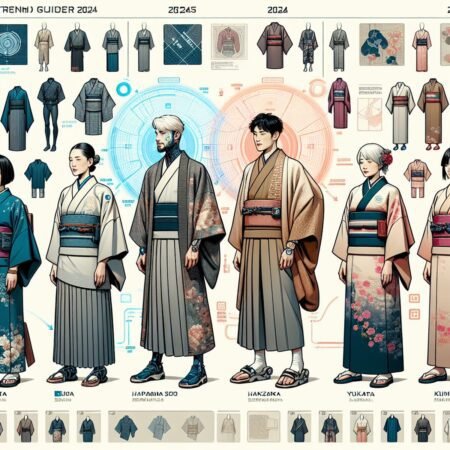
Introduction
Traditional Japanese clothing, also known as “wafuku,” holds a significant place in Japanese culture and fashion, representing a rich tapestry of history, tradition, and artistry. This iconic attire encompasses the national dress of Japan, the kimono, along with other traditional garments that have evolved over centuries.
From the vibrant colors to the intricate designs, traditional Japanese clothing reflects a profound connection to the country’s heritage and customs.
In this comprehensive style guide for 2024, we will explore:
- The evolution of traditional Japanese fashion
- The timeless elegance of these garments
- Casual summer styles inspired by wafuku
- And much more!
From the origins of these garments to their cultural symbolism, we will uncover the allure and versatility of traditional Japanese clothing that continues to inspire modern fashion trends.
1. Evolution of Traditional Japanese Fashion
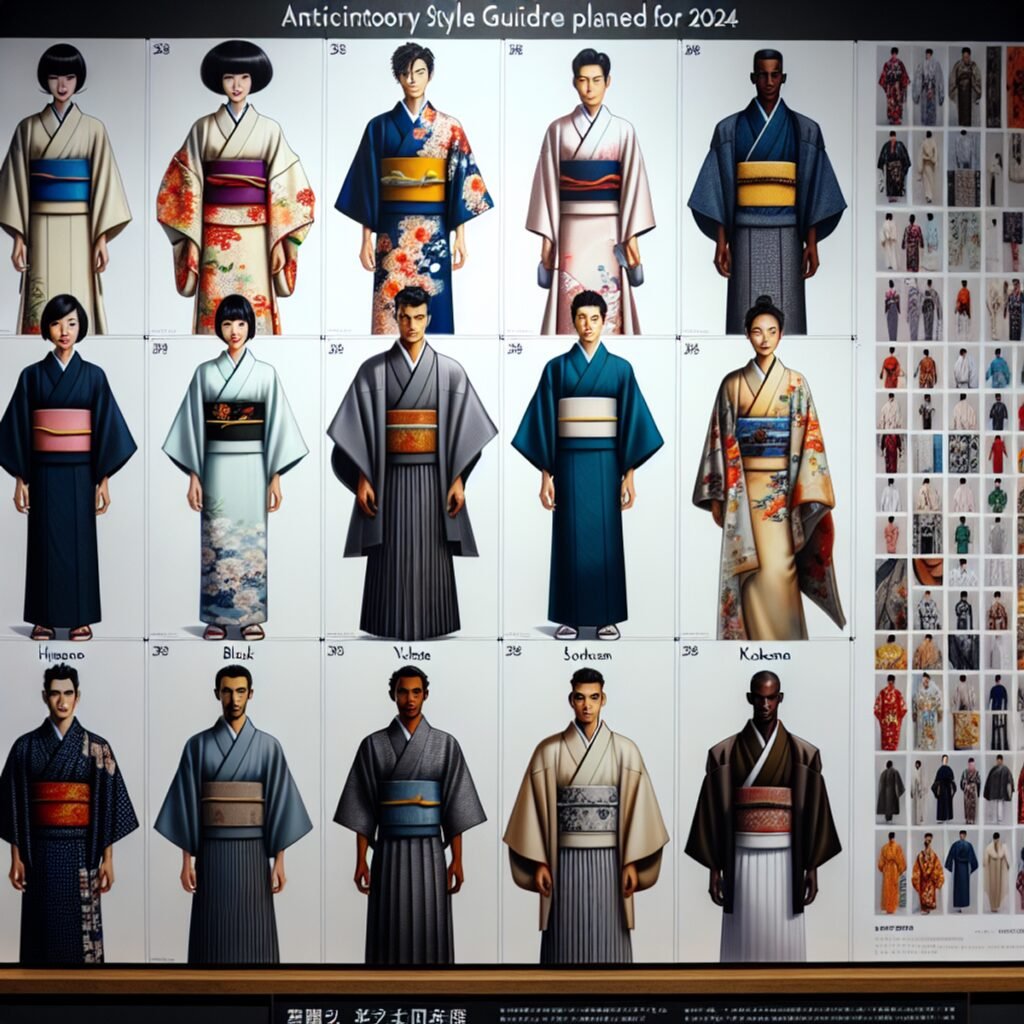
Traditional Japanese fashion has a rich and fascinating history that has evolved over centuries. The development of traditional clothing styles in Japan can be traced back to different periods, each leaving its mark on the fashion landscape. Let’s explore the historical journey of traditional Japanese fashion and understand how it has been influenced by various factors.
The Heian Period: A Time of Elegance and Refinement
During the Heian period (794-1185), Japan experienced a cultural renaissance characterized by elegance and refinement. This era saw the emergence of distinct clothing styles that reflected the aristocratic society’s taste for sophistication. Women wore multiple layers of robes known as “junihitoe,” which consisted of twelve layers and were adorned with vibrant colors and intricate patterns. The layers added a sense of gracefulness and emphasized the importance of modesty.
The Edo Period: Simplicity and Practicality
The Edo period (1603-1868) brought significant changes to traditional Japanese fashion. With peace prevailing throughout Japan, society experienced stability, leading to the rise of a new middle class known as the “chonin.” This social change influenced clothing styles, as practicality and simplicity became more important.
During this period, the kimono emerged as the most iconic garment in Japanese fashion. It became the everyday attire for both men and women, with various types such as kosode (short-sleeved kimono) and hitatare (kimono worn by samurai) gaining popularity. The fabrics used for kimono were mainly silk or cotton, depending on one’s social status.
Modern Influences on Traditional Japanese Clothing
The Meiji Restoration in the late 19th century marked a turning point in Japanese history, bringing about rapid modernization and Westernization. As Japan opened up to international trade and adopted Western customs, traditional clothing styles faced challenges.
Western clothing began to influence Japanese fashion, leading to the adoption of Western-style garments in daily life. However, traditional attire continued to be cherished and preserved for special occasions and cultural events.
In recent years, there has been a resurgence of interest in traditional Japanese fashion. Many designers are incorporating elements of traditional clothing into their modern creations, striking a balance between past and present aesthetics. This revival not only celebrates Japan’s rich cultural heritage but also allows for the preservation of traditional clothing techniques and craftsmanship for future generations.
The evolution of traditional Japanese fashion has been shaped by historical periods like the Heian and Edo, as well as the impact of modernization and Westernization.
2. The Kimono: Timeless Elegance
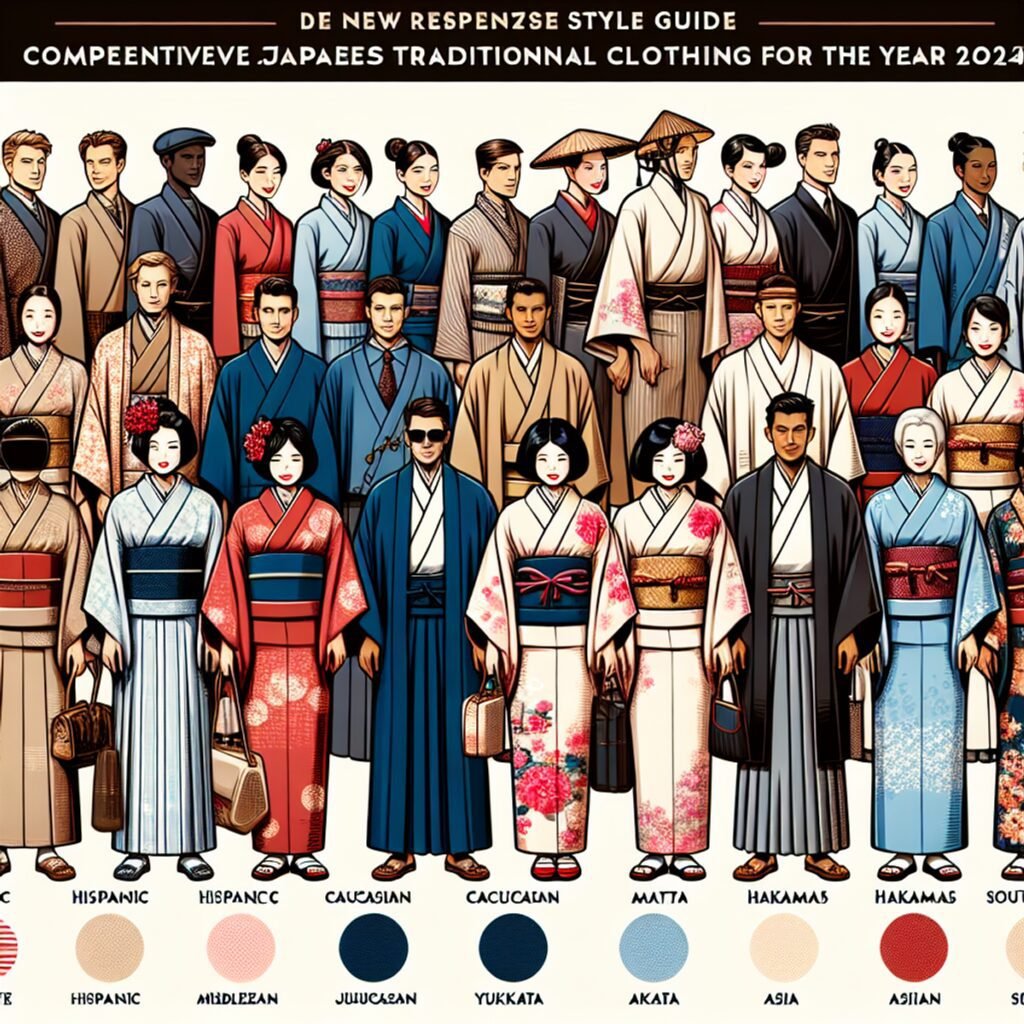
The kimono is the most iconic and recognizable form of traditional Japanese attire, reflecting timeless elegance and cultural significance. Here’s an in-depth look at the kimono and its unique characteristics:
Various Types and Styles
Kimonos come in different types, such as furisode (with long swinging sleeves), tomesode (a formal style for married women), and houmongi (semi-formal attire with a flowing pattern from shoulder to hem). Each style carries its own distinct features, making it suitable for various occasions.
Art of Kimono Dressing and Accessories
The art of wearing a kimono involves intricate steps, including the use of accessories like the obi sash, which plays a crucial role in defining the overall appearance of the outfit. The obi can be tied in different styles, adding a touch of individuality to the ensemble.
Cultural Significance and Symbolism
Kimonos are adorned with an array of patterns and colors, each carrying deep cultural symbolism. For example, certain motifs represent longevity, happiness, or fidelity, while color combinations hold specific meanings rooted in Japanese traditions and beliefs.
The kimono stands as a testament to Japan’s rich heritage and serves as a symbol of grace, artistry, and tradition.
3. Yukata: Casual Summer Style
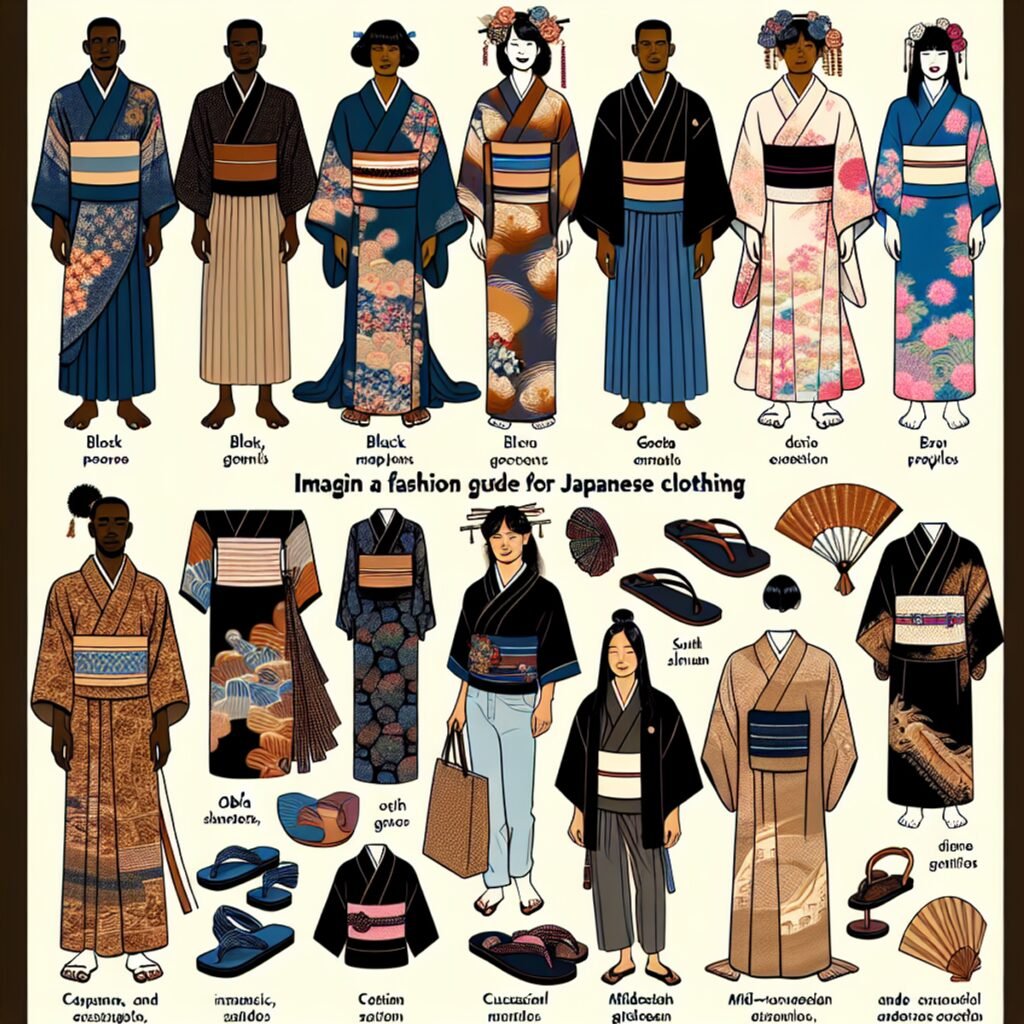
The yukata, a casual summer kimono made of cotton, holds a special place in traditional Japanese clothing. Let’s delve into the origins, key features, and proper way to wear this beloved garment.
3.1 Origins and Features
The yukata has its roots in the yamato-e culture of the Heian period (794-1185). Originally worn as a robe after bathing, it evolved into a form of everyday dress for the aristocracy during the Edo period (1603-1868). Unlike the elaborate and formal kimono, the yukata is characterized by its lightweight and breathable cotton fabric, making it ideal for hot and humid summers.
Key Features
- Simplified Design: Yukatas are typically less intricate than formal kimonos, featuring bold, colorful patterns suitable for summer festivities.
- Obi Variation: The obi belt for yukata is narrower and tied in a simple bow at the back, enhancing comfort and ease of wear.
- Seasonal Appeal: Yukatas often showcase vibrant seasonal motifs like fireworks, flowers, or ocean waves, reflecting the festive atmosphere of summer.
How to Wear a Yukata
- Preparation: Start with traditional undergarments like juban and nagajuban, followed by wrapping the yukata left over right.
- Tying the Obi: Secure the yukata with a wide obi sash before adding a decorative hanhaba obi or ribbon around the waist.
- Final Touches: Adjust the length and fold of the yukata to ensure a comfortable yet elegant look.
The simplicity and comfort of yukatas make them an iconic fashion choice during summer festivals (matsuri) or when enjoying leisurely moments at home or traditional inns (ryokan).
3.2 Styling and Patterns
The yukata is a popular summer garment in Japan, known for its lightweight and breathable cotton fabric. It is commonly worn during festivals, fireworks displays, and other casual outdoor events. Unlike the formal kimono style, the yukata is more relaxed and easier to wear, making it a favorite choice among both locals and tourists.
Styling the Yukata: The Obi
When it comes to styling the yukata, one of the key elements to consider is the obi, which is the sash that is tied around the waist. There are different ways to tie the obi, each creating a unique look. Some popular obi styles include:
- Taiko Musubi: This is a simple and classic way of tying the obi, creating a neat bow at the back. It is a versatile style that suits various occasions.
- Musubi Knot: This knot creates a more intricate and decorative look. It involves twisting and folding the obi to form an elegant knot at the front.
Common Patterns on Yukatas
Now let’s explore some of the common patterns found on yukatas:
- Floral Designs: Floral patterns are widely seen on yukatas, ranging from delicate cherry blossoms to bold peonies. These designs add a touch of femininity and beauty to the garment.
- Geometric Prints: Geometric patterns, such as stripes or checks, are also popular choices for yukatas. These designs create a modern and stylish look while still maintaining the traditional vibe.
- Nature Motifs: Yukatas often feature nature-inspired motifs like butterflies, birds, or waves. These patterns reflect Japan’s deep connection with nature and evoke a sense of tranquility.
It’s worth noting that yukata patterns can vary depending on the occasion and personal preference. Some people prefer vibrant colors and bold prints, while others opt for more subtle and understated designs. Ultimately, the choice of pattern is a matter of individual taste and style.
4. Traditional Attire Beyond Kimono: For Men and Weddings
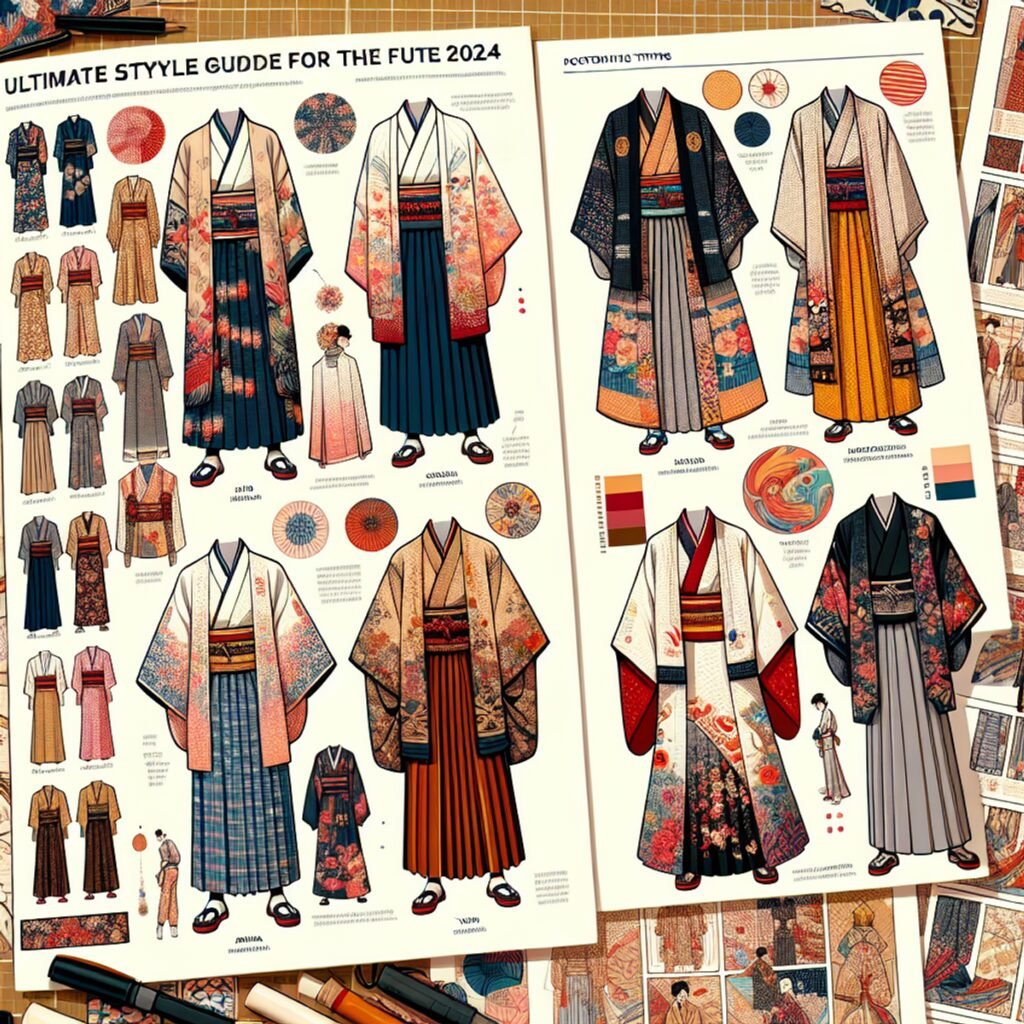
Traditional Japanese clothing goes beyond the famous kimono. There are many other types of clothing that have their own styles and cultural importance. Let’s explore some traditional outfits for men and learn about their significance:
Traditional Attire for Men
Here are some examples of traditional clothing worn by men in Japan:
- Hakama: These pleated trousers have traditionally been worn with kimono, reflecting their historical connection to samurai culture. Nowadays, hakama are often seen in formal settings, adding a touch of sophistication to modern outfits.
- Haori Jacket: This jacket can be worn by both men and women as a stylish outer layer. It complements various traditional ensembles with its unique design and flair.
- Yukata: A lightweight and casual summer kimono, typically made of cotton. Yukata are commonly worn at festivals and hot spring resorts.
Traditional Bridal Attire
Weddings are special occasions where traditional attire still holds great significance in Japan. Let’s take a look at two types of traditional bridal outfits:
- Uchikake: This is a colorful outer robe worn by the bride during the wedding ceremony and reception. It is often heavily embroidered with intricate designs, symbolizing joy and happiness.
- Shiromuku: A pure white kimono worn by the bride during the wedding ceremony. White is associated with purity in Japanese culture, representing the bride’s transition into married life.
The history and meanings behind these traditional garments provide a fascinating glimpse into Japan’s culture. Each outfit has its own story to tell, showcasing the country’s traditions, craftsmanship, and timeless beauty.
5. Accessories and Footwear to Complete the Look
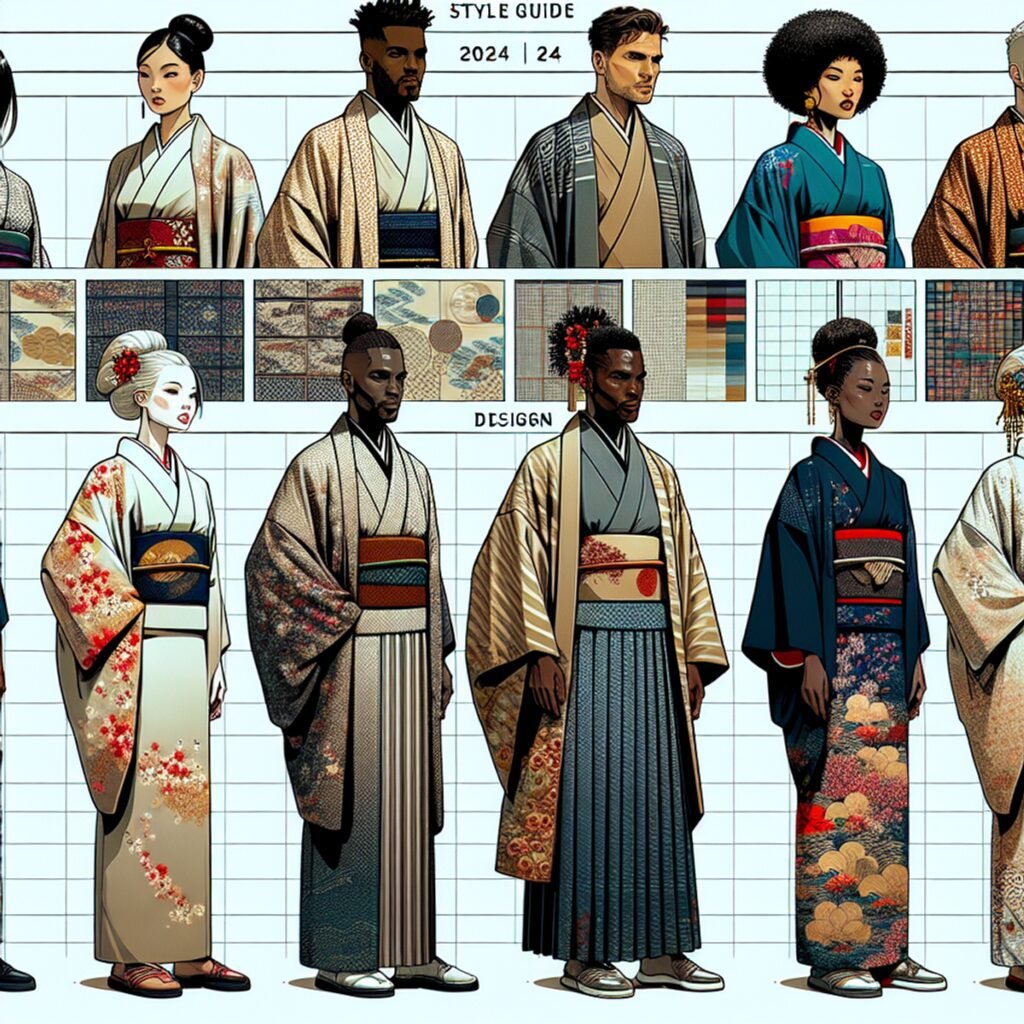
Traditional Japanese clothing is incomplete without the perfect accessories and footwear to complement the overall attire. Here are some essential elements that complete the traditional Japanese look:
Geta Sandals
These traditional Japanese sandals are characterized by their elevated wooden base, held onto the foot with fabric thongs. Geta sandals are commonly worn with yukata during summer festivals and other casual occasions, adding a touch of authenticity to the outfit.
Tabi Socks
Tabi socks feature a distinctive split-toe design, making them suitable for wearing with traditional Japanese footwear like geta and zori. They are an integral part of traditional attire, offering both comfort and functionality while maintaining cultural significance.
Kanzashi Hair Ornaments
Kanzashi are ornate hair ornaments adorned with intricate designs, often featuring delicate silk flowers or decorative elements. These accessories are elegantly paired with kimono outfits, adding a graceful and refined touch to the overall look.
These accessories not only serve practical purposes but also contribute to the aesthetic appeal of traditional Japanese clothing, reflecting the attention to detail and cultural significance embedded in every element of wafuku.
Revival and Contemporary Interpretations
Interest in wearing traditional Japanese clothing has surged in recent years, both in Japan and the global fashion scene. Designers have eagerly embraced elements of traditional attire, skillfully blending them into their modern creations while maintaining a delicate balance between past and present aesthetics.
This resurgence reflects a deep appreciation for the timeless elegance and cultural significance of traditional Japanese clothing. The charm of wafuku, with its rich history and exquisite craftsmanship, has captivated fashion enthusiasts worldwide. As a result, modern interpretations of traditional Japanese garments have become popular on international runways and in everyday outfits.
Designers are reimagining classic shapes and patterns, injecting them with a fresh perspective to resonate with contemporary tastes. By combining traditional methods with innovative design ideas, they are revitalizing wafuku, ensuring its relevance in today’s ever-changing fashion world.
The revival of traditional clothing not only honors Japan’s vibrant fashion heritage but also promotes cross-cultural appreciation and understanding. It acts as a link between the past and the present, creating a lasting legacy that transcends time.
Through this modern approach, traditional Japanese clothing continues to inspire and fascinate people, embodying the essence of cultural continuity and artistic growth.
Preserving the Past for the Future
The preservation of traditional Japanese clothing is crucial to ensure that future generations can appreciate and understand the rich cultural heritage associated with these garments. By safeguarding the techniques, craftsmanship, and knowledge surrounding traditional clothing, we can keep this valuable aspect of Japanese culture alive.
Here are some key points highlighting the importance of preserving traditional Japanese clothing:
- Cultural Heritage: Traditional Japanese clothing is a significant part of the country’s cultural identity. It reflects the history, values, and aesthetics of Japan. Preserving these garments allows us to maintain a connection to our ancestors and their way of life.
- Craftsmanship: Traditional Japanese clothing is made using intricate techniques that have been passed down through generations. From hand-dyeing fabrics to intricate embroidery, these skills require time, dedication, and expertise. By preserving and promoting these techniques, we can ensure that they are not lost to time.
- Symbolism and Meaning: Traditional Japanese clothing is often adorned with symbolic patterns, colors, and motifs that hold deep meaning. Each design choice represents different aspects of nature, spirituality, or social status. Preserving these garments allows us to pass on the stories and symbolism associated with them.
- Historical Significance: Traditional Japanese clothing provides insights into different periods of Japan’s history. Each era had unique styles and influences that shaped the development of traditional fashion. By preserving these garments, we can study and appreciate the historical context in which they were created.
- Inspiration for Future Creations: Traditional Japanese clothing continues to inspire contemporary fashion designers around the world. By preserving these garments, we provide a foundation for creativity and innovation in modern designs that incorporate elements of traditional attire.
Preserving traditional Japanese clothing is not just about physical artifacts but also about maintaining cultural knowledge and passing it on to future generations. Through education, exhibitions, and support for artisans practicing traditional techniques, we can ensure that these garments continue to be cherished and celebrated for years to come.
Conclusion
As we wrap up our exploration of traditional Japanese clothing, it’s clear that this unique and beautiful style never goes out of fashion. The future of traditional Japanese clothing is not only about keeping its history and artistry alive but also about finding new ways to incorporate it into our modern lives.
Here are some key points to remember:
- Appreciating the Beauty: Traditional Japanese fashion is a captivating mix of grace, elegance, and creativity. We can honor Japan’s cultural heritage by wearing kimono for special occasions or adding traditional elements to our everyday outfits.
- Embracing Versatility: Despite its deep roots in tradition, traditional Japanese clothing can also be flexible and adaptable. Today’s designers are skillfully blending wafuku with contemporary fashion, striking a perfect balance between old and new. By embracing this versatility, we ensure that wafuku remains relevant for future generations.
- Cultural Exchange: The world has shown a growing interest in traditional Japanese clothing, and this presents an opportunity for cultural exchange. Through this exchange, we can learn to appreciate the intricate craftsmanship, symbolic meanings, and unique techniques that make wafuku so special.
- Preserving Heritage: Traditional Japanese clothing is not just about style; it’s a tangible link to Japan’s past. By preserving its history and supporting skilled artisans, we contribute to the preservation of this rich cultural heritage.
In conclusion, traditional Japanese clothing is more than just a fashion choice – it’s a way to connect with Japan’s past, celebrate its present, and shape its future. Let yourself be inspired by the world of traditional Japanese fashion and discover the timeless beauty it holds.
FAQs (Frequently Asked Questions)
What is the significance of the kimono in traditional Japanese attire?
The kimono is the most iconic and recognizable form of traditional Japanese attire. It holds cultural significance and symbolism, with various types and styles such as furisode, tomesode, and houmongi, each highlighting unique characteristics. The art of kimono dressing and the role of accessories like the obi sash will also be explored in detail.
What is a yukata and how does it differ from a formal kimono?
The yukata is a lightweight cotton kimono primarily worn during the summer months or at casual events. It differs from a formal kimono in its design, fabric, and overall style. The article will guide readers on how to properly wear a yukata, including tying the obi belt, as well as showcase common patterns found on yukatas.
What are some traditional garments beyond the kimono for both men and women?
The article will explore other traditional garments for both men and women, such as hakama, haori, samue, and traditional wedding attire. It will examine their unique styles and occasions for wear, including the role of hakama in samurai culture and modern formal settings.
What role do accessories play in completing a traditional Japanese outfit?
Accessories such as geta sandals, tabi socks with split toes, and kanzashi hair ornaments are essential to completing a traditional Japanese outfit. The article will examine their significance and how they complement different styles of traditional attire.
How has there been a revival of interest in traditional Japanese clothing in recent years?
The resurgence of interest in wearing traditional Japanese clothing has been observed both in Japan and the global fashion scene. Designers have incorporated elements of traditional attire into their modern creations, maintaining a balance between past and present aesthetics.
Why is it important to preserve traditional Japanese clothing techniques and craftsmanship?
Preserving traditional Japanese clothing techniques and craftsmanship is crucial for future generations to appreciate the rich history and cultural significance behind these garments. The article will highlight the importance of this preservation for maintaining the legacy of traditional Japanese fashion.
